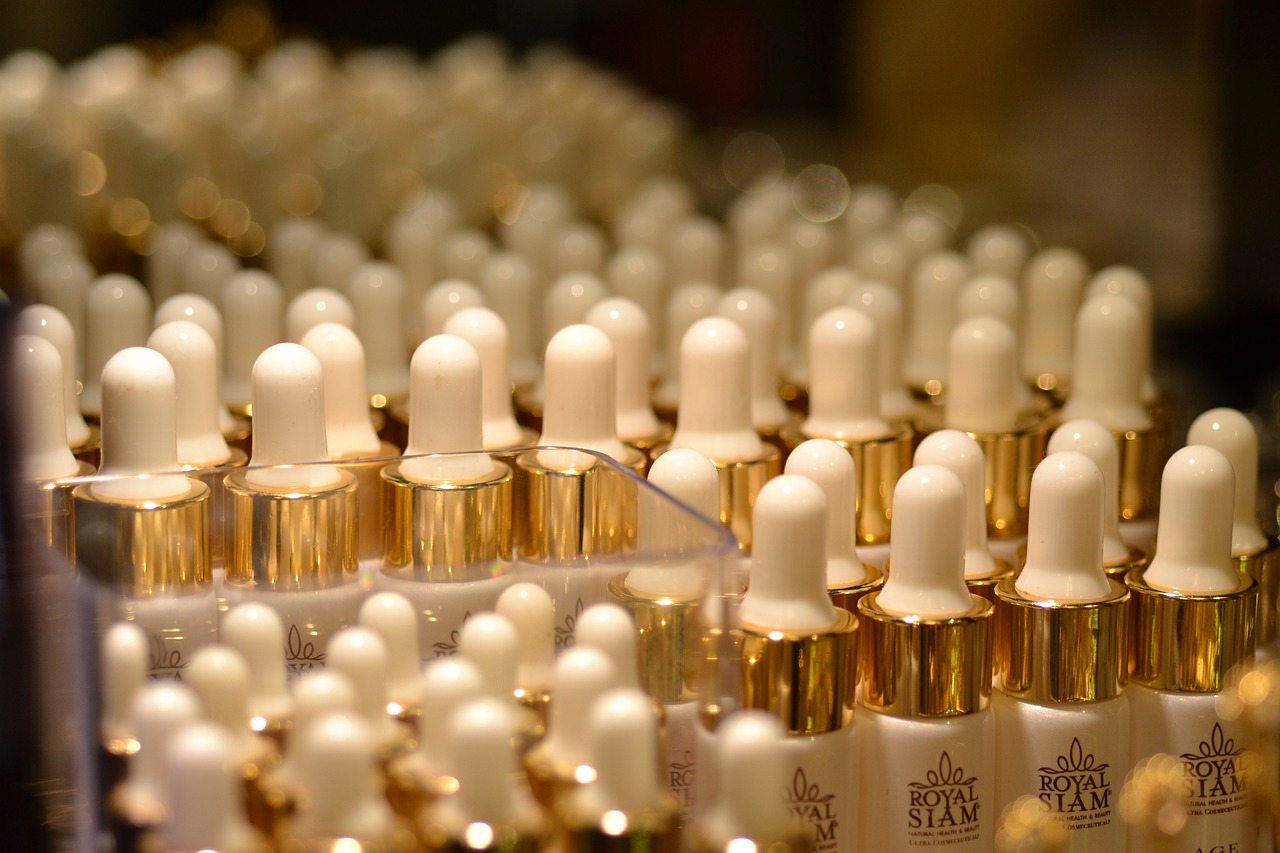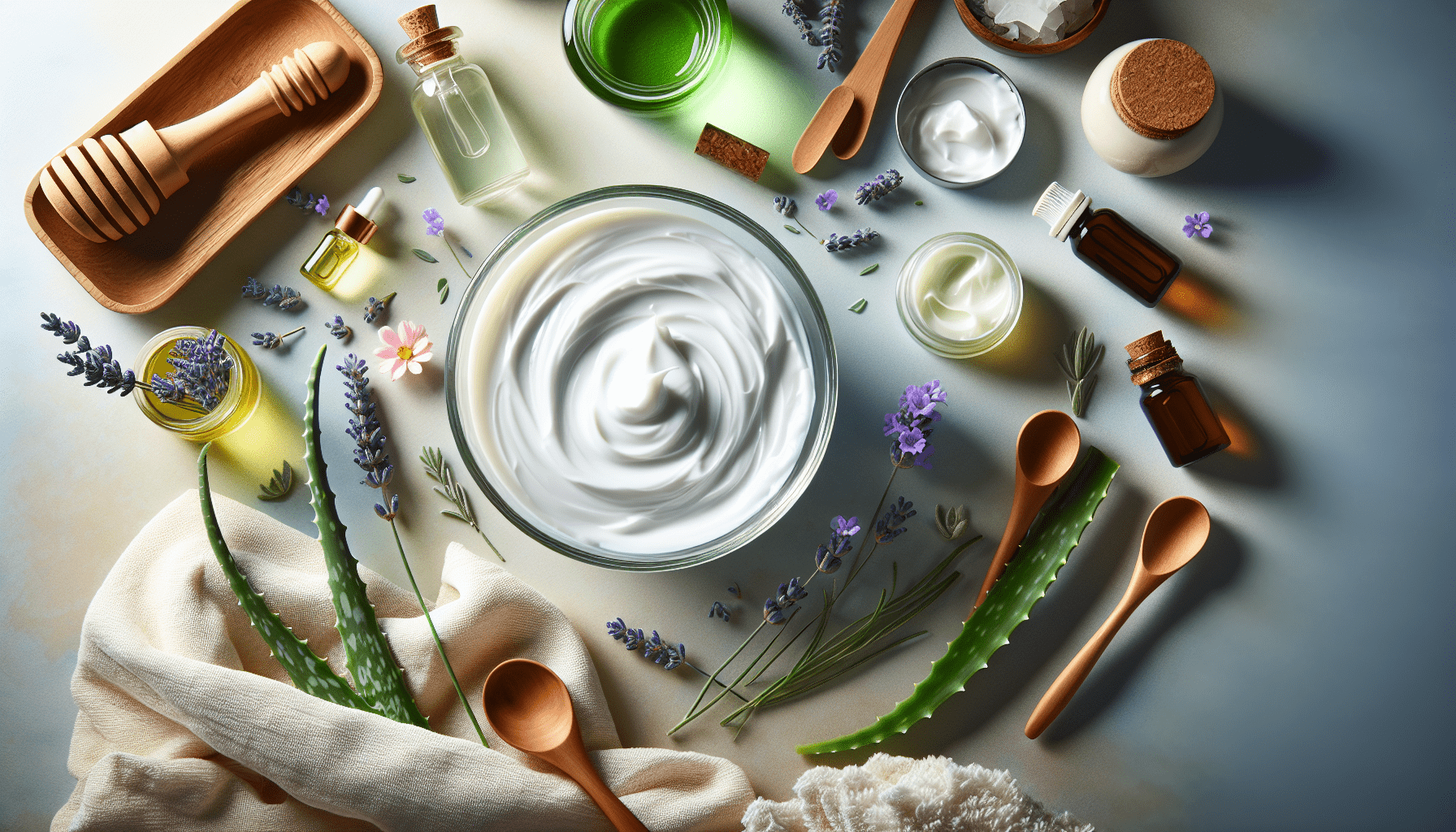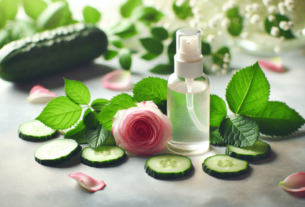Have you ever imagined creating your own skincare products right in the comfort of your kitchen? With the abundance of natural ingredients available, crafting custom skincare solutions is not only achievable but also incredibly satisfying. By doing so, you gain control over what you apply to your skin and can tailor products to match your specific needs. Plus, the process is fun and leaves you feeling like a skincare alchemist!

Understanding the Basics of Skincare
Before you jump into creating your own skincare concoctions, it’s important to understand a bit about skincare itself. This involves acknowledging your skin type, the purpose of different products, and the common ingredients used in skincare.
Identifying Your Skin Type
The first step in effective skincare is identifying your skin type. Your basic types include oily, dry, combination, sensitive, and normal. Knowing your skin type is crucial because it determines which ingredients will work best for you.
- Oily Skin: Typically has a shiny appearance and is prone to acne.
- Dry Skin: Often feels tight, rough, and may have flaky or peeling areas.
- Combination Skin: Characterized by dryness in some areas (like cheeks) and oiliness in others (like the T-zone).
- Sensitive Skin: Prone to redness, irritation, or allergies.
- Normal Skin: Balanced, neither too oily nor too dry, and not sensitive.
The Purpose of Different Skincare Products
Each skincare product has a specific purpose, and it’s essential to understand these to create effective DIY products.
- Cleansers: Remove dirt, oil, and makeup.
- Toners: Restore skin’s pH balance and prepare it for moisturization.
- Exfoliants: Remove dead skin cells and promote cell turnover.
- Serums: Deliver concentrated active ingredients deeply into the skin.
- Moisturizers: Hydrate and lock in moisture.
Common Ingredients in Skincare
Several common ingredients feature across different skincare products. While you might already have some in your kitchen, understanding their benefits is vital.
- Aloe Vera: Known for its soothing and hydrating properties.
- Honey: Antibacterial and a great humectant.
- Coconut Oil: Highly moisturizing and antibacterial.
- Baking Soda: A mild exfoliant.
- Essential Oils: Provide fragrance and can offer various skin benefits.
The Benefits of DIY Skincare Products
Making your own skincare products isn’t just trendy; it offers numerous benefits that commercially available products may not.
Customization to Suit Your Skin
One of the most significant advantages is the ability to customize products to suit your skin’s needs. You can adjust recipes to include more hydrating ingredients if your skin is dry or introduce soothing agents like chamomile or aloe vera for sensitive skin.
Use of Natural Ingredients
When you make your own products, you can ensure that only natural ingredients touch your skin. You’ll avoid harmful chemicals, synthetic fragrances, and preservatives, allowing you to cater to skin sensitivities or avoid allergens.
Cost-Effectiveness
Commercial skincare products can be expensive. DIY alternatives often cost less because you’re using ingredients that you might already have. Plus, many natural ingredients can serve multiple purposes, further saving you money.
Reducing Waste
Creating your own skincare helps reduce packaging waste. You can reuse containers, buy ingredients in bulk, and minimize reliance on single-use plastics.
Essential Tools for DIY Skincare
Creating skincare products at home requires a few basic tools. Most of these you’ll likely already have, while others are easy to acquire.
Basic Kitchen Tools
- Mixing Bowls: Various sizes for mixing different products.
- Spoons and Spatulas: For scooping and mixing ingredients.
- Measuring Cups and Spoons: Essential for precision in recipes.
- Whisk or Hand Mixer: For blending ingredients well.
Storage Containers
Invest in glass jars or small containers to store your homemade products. These are reusable and tend to preserve your products better than plastic.
Labels
Labeling containers is important to keep track of the ingredients and the date of production. This ensures you know when it’s time to make a fresh batch.
DIY Skincare Recipes
Now that you have the basics down, it’s time to try your hand at creating some skincare products. Here are simple recipes suitable for different skin types.
Simple Facial Cleanser for All Skin Types
Ingredients
- 1 tbsp honey
- 1 tbsp coconut oil
- 1 tbsp castile soap
Instructions
- Combine all ingredients in a bowl.
- Mix thoroughly until smooth.
- Transfer to a container.
Use the cleanser daily to gently remove impurities without stripping your skin of natural oils.
Hydrating Toner for Dry Skin
Ingredients
- 2 cups distilled water
- 1 tbsp apple cider vinegar
- A few drops of rose essential oil
Instructions
- Mix apple cider vinegar and distilled water in a spray bottle.
- Add rose essential oil and shake well to combine.
- Apply to face with a cotton pad after cleansing.
This toner helps restore your skin’s pH balance while providing hydration and a soothing fragrance.
Exfoliating Scrub for Oily Skin
Ingredients
- 2 tbsp sugar
- 1 tbsp olive oil
- A few drops of tea tree oil
Instructions
- Blend sugar and olive oil together.
- Add tea tree oil and stir until combined.
- Massage gently onto the skin in a circular motion, then rinse.
This scrub removes excess oil and dead skin, leaving your face refreshed.
Nourishing Serum for Sensitive Skin
Ingredients
- 3 tbsp jojoba oil
- 10 drops lavender essential oil
- 5 drops chamomile essential oil
Instructions
- In a glass dropper bottle, combine all oils.
- Shake gently to mix.
- Apply a few drops to damp skin and massage gently.
This serum calms irritation and reduces redness, providing nourishment with a light feel.

Safety Tips for Making and Using Homemade Skincare
While crafting your skincare products is exciting, safety should always come first. Keeping these tips in mind will help ensure a positive experience.
Patch Test New Ingredients
Always conduct a patch test when trying out new ingredients to avoid adverse reactions. Apply a small amount of the product to a discrete area, and wait 24 hours to check for any irritation.
Maintain Cleanliness
Before making your products, ensure all your tools and containers are clean to avoid contamination and bacterial growth in your skincare.
Consider Shelf Life
Natural products typically have a shorter shelf life due to lack of preservatives. It’s best to make smaller batches and store them in a cool, dark place.
Exploring Advanced Skincare Techniques
Once you’re comfortable with the basics, you can start exploring more advanced DIY recipes that incorporate additional beneficial ingredients.
Incorporating Herbal Infusions
Herbs like chamomile, lavender, and calendula can infuse your products with additional therapeutic benefits. Infuse oils or water with herbs and use them as a base for various products.
Using Clay for Skin Benefits
Different clays like bentonite or kaolin offer unique benefits, from detoxification to balancing oil production. They make excellent ingredients in masks and scrubs.
Adding Vitamin Supplements
Vitamin E oil or powdered Vitamin C can offer antioxidant benefits to your skincare products, enhancing their efficacy.

Addressing Common Skincare Concerns with DIY Solutions
Different skin concerns can be targeted with specific DIY solutions. Here’s how you can tackle some common issues.
Acne and Blemishes
Ingredients like tea tree oil, witch hazel, and clay are effective in managing acne due to their antibacterial properties. Creating spot treatments with these can help reduce blemishes.
Fine Lines and Aging
Ingredients rich in antioxidants, like Vitamin E, rosehip oil, and green tea, are useful for addressing signs of aging. They can be used to create anti-aging serums and treatments.
Dullness and Uneven Skin Tone
Brightening ingredients such as lemon juice, turmeric, and yogurt can help with dullness and uneven skin tone. They can be incorporated into masks or exfoliating products.
Finding Inspiration and Resources for Continued Learning
There’s a world of DIY skincare possibilities, and continual learning can elevate your creations.
Books and Guides
Many books are dedicated to natural skincare recipes and the science behind them. Some titles contain detailed guides and tips for creating your homemade products effectively.
Online Communities
Forums, blogs, and social media groups can be a wealth of information and community support for DIY skincare enthusiasts. You can learn from others’ experiences, ask questions, and share your own recipes.
Workshops and Courses
Consider enrolling in workshops or online courses that focus on natural skincare formulations. These can provide hands-on experience and a deeper understanding of ingredient interactions.

Reflecting on Your Skincare Journey
Engaging in the art of creating your own skincare products not only benefits your skin but also brings a sense of accomplishment. The journey is as much about self-discovery as it is about crafting the perfect product. You learn what works for your skin, foster creativity, and make mindful choices about the ingredients you use.
Crafting DIY skincare products empowers you to take control of your skincare routine while indulging in a fulfilling hobby. With each recipe you try and every small batch you perfect, you’re forging a path to more personalized, eco-friendly, and conscious skincare habits. Your skin will not only look and feel better, but you’ll also walk with the pride of having crafted something uniquely your own.


